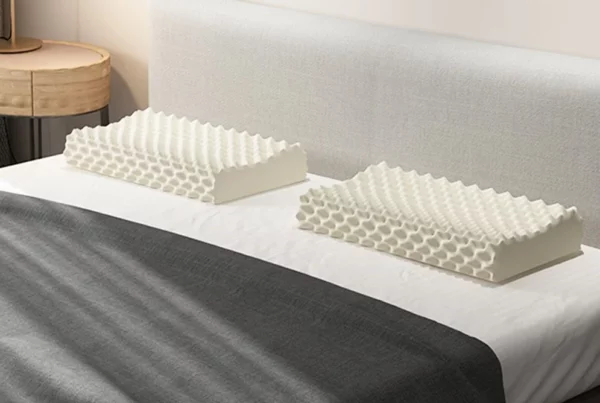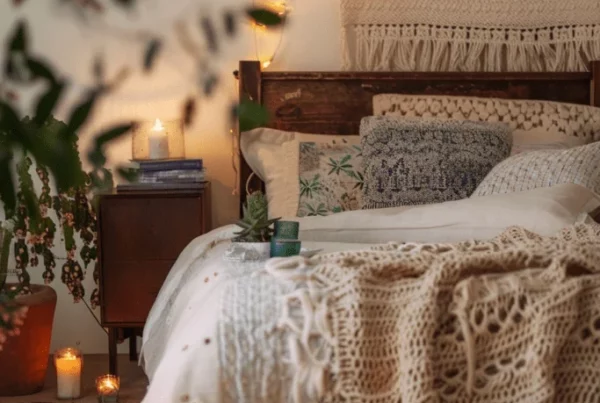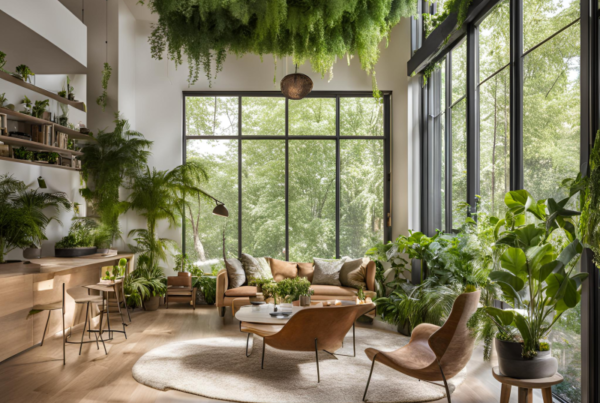Table of Contents
How to Use Lighting in Interior Decoration: Transform Your Space with Light
As the days shorten and nights lengthen, our focus naturally shifts towards creating a cozy and inviting atmosphere within our homes. But who says a complete overhaul is necessary to achieve this? The truth is, a well-designed lighting scheme can dramatically transform your space, adding warmth, functionality, and a touch of magic.
This comprehensive guide dives deep into the world of interior lighting. We’ll explore different lighting types, discover how to choose the perfect light for each room, and unveil a treasure trove of inspiration to help you illuminate your dream home.
The Power of Light: Why It Matters in Interior Design
Lighting plays a pivotal role in crafting an interior space. The right kind of light can not only brighten a room but also visually expand it, highlight specific design elements, and most importantly, create a unique ambiance.
The intensity, color temperature, and placement of lights all influence our mood, well-being, and even focus. A bright, cool light in your kitchen aids in meal preparation, while a warm, dim light in your bedroom fosters relaxation. By understanding the power of light, you can create a harmonious environment that caters to your specific needs.
Unveiling the Lighting Spectrum: Types of Lighting for Every Need
To effectively utilize light in your interior design, let’s explore the different types available:
- General Lighting: This is the primary source of light in a room, often provided by ceiling fixtures like pendant lights or flush mounts. Their purpose is to evenly illuminate the entire space.
- Task Lighting: This type of lighting focuses on illuminating specific areas for focused activities. Think table lamps on desks, sconces by reading nooks, or under-cabinet lights in kitchens.
- Accent Lighting: This lighting is all about highlighting decorative elements and creating visual interest. This could include wall sconces showcasing artwork, recessed lights emphasizing architectural details, or LED strips creating a dramatic glow behind furniture.
When planning your lighting scheme, consider the function of each room and divide it into zones. By incorporating a combination of these lighting types, you’ll create a cohesive and functional illumination plan.
Living Room Lighting: Bathe in the Warm Glow of Relaxation
The living room is the heart of a home, a place for family gatherings and entertaining friends. Therefore, the lighting needs to be versatile. Opt for a strong source of general lighting, such as a chandelier or downlights, to illuminate the entire space. Introduce task lighting with floor lamps beside the sofa for creating a cozy reading corner or watching movies. Don’t forget accent lighting – sconces highlighting artwork or strategically placed lamps to showcase decorative elements can add personality and depth to your living area.
Dining Room Lighting: Setting the Stage for Memorable Meals
The dining room is where families and friends connect over shared meals. To create a warm and inviting atmosphere, opt for a central pendant lamp positioned directly above the dining table. This ensures the light falls evenly across the surface, illuminating everyone comfortably. Consider incorporating additional accent lighting, such as strategically placed wall sconces or dimmable lamps, to create a more intimate ambience for special occasions.
Bedroom Lighting: A Sanctuary of Tranquility
The bedroom is a haven for relaxation and rejuvenation. Steer clear of harsh, general lighting and focus on creating a calming atmosphere. Utilize bedside lamps with soft, warm light for reading before sleep. Consider dimmers on your overhead lighting or wall sconces to create a gradual transition from bright to dim light, aiding in the process of winding down. Explore the possibilities of accent lighting with strategically placed lamps to highlight artwork or create a soft glow around a reading chair.
Kitchen Lighting: Illuminating Culinary Creations
The kitchen demands well-lit work surfaces. Implement task lighting solutions like pendant lights positioned directly above your countertops or under-cabinet lighting to ensure optimal illumination when preparing meals. Consider incorporating a dimmer switch on your general lighting to create a more relaxed ambiance for casual breakfasts or evening snacks.
Bathroom Lighting: Balancing Functionality with Style
The bathroom requires a balance between functionality and aesthetics. Opt for bright, cool-toned general lighting to illuminate the entire space for daily routines. Task lighting above the vanity mirror is crucial for applying makeup and shaving. Dimmer switches on the general lighting or strategically placed wall sconces can create a spa-like atmosphere for a more luxurious bathing experience.
Beyond the Basics: Tips and Tricks for Lighting Like a Pro
Now that you’ve grasped the fundamentals, here are some additional tips to transform your space with light:
- Layer Your Lighting: Combine different types of lighting to create depth and visual interest.
- Consider Dimmer Switches: Dimmer switches offer the flexibility to adjust the mood depending on the occasion.
- Embrace Natural Light: Maximize the use of natural light during the day with strategically placed windows and skylights.
- Don’t Forget Color Temperature: Opt for warm light (around 2700 Kelvin) in living areas and bedrooms to create a cozy atmosphere. Utilize cooler light (around 4000 Kelvin) in kitchens and bathrooms for enhanced task visibility.
- Think Beyond the Ceiling: Explore the possibilities of wall sconces, floor lamps, and table lamps to add visual interest and create pockets of light throughout the room.
- Scale Matters: Choose lighting fixtures that are proportionate to the size of your room. Oversized fixtures in a small space can feel overwhelming, while miniature lamps in a large room will get lost.
- Embrace the Power of Smart Lighting: Smart lights allow you to control brightness, color temperature, and even schedule lighting changes remotely, adding an extra layer of convenience and personalization to your space.
- Don’t Be Afraid to Experiment: Lighting design is an opportunity to showcase your personality. Play with different styles, textures, and finishes to create a unique and inviting atmosphere.
Inspiration Station: Lighting Ideas for Every Room
To fuel your creative spark, here are some inspiring lighting ideas for different rooms:
- Living Room Drama: Create a dramatic focal point with a statement chandelier or a cluster of pendant lights above your coffee table.
- Cozy Reading Nook: Introduce a comfortable armchair bathed in the warm glow of a floor lamp with an adjustable arm.
- Kitchen Elegance: Elevate your kitchen backsplash with strategically placed LED strips for a touch of modern luxury.
- Bathroom Serenity: Opt for sconces with frosted glass shades on either side of the bathroom mirror for a spa-like ambience.
- Home Office Focus: Utilize a desk lamp with an adjustable head to ensure proper illumination for work projects.
Conclusion: Light Up Your Life (and Your Home!)
By understanding the different types of lighting and utilizing these design tips, you can transform your home into a haven bathed in warm, inviting light. Remember, lighting isn’t just about functionality; it’s about creating an atmosphere that reflects your personality and lifestyle. So, unleash your creativity, embrace the power of light, and watch your space come alive!













